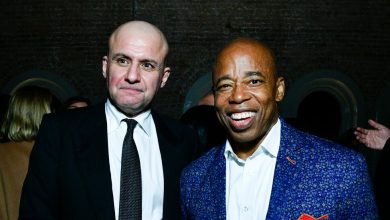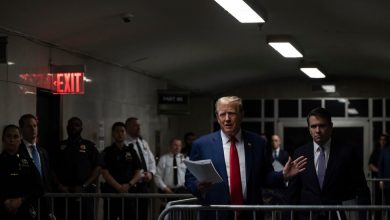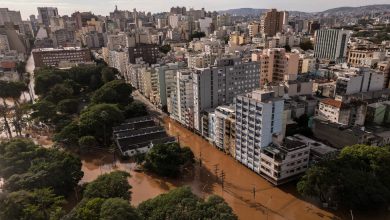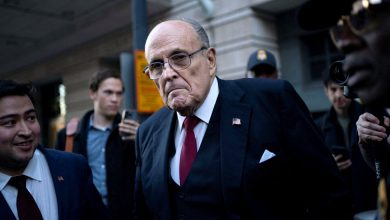Peru’s Foreign Minister Concedes There’s No Evidence Criminals Are Behind Protests

In a stark admission, Peru’s foreign minister contradicted its president about the origin of deadly protests shaking the country, saying in an interview this week “we don’t have any evidence” that the demonstrations were being driven by criminal groups.
Protests that began over an ousted president have roiled Peru for almost two months, leaving nearly 60 people dead, most of them civilians, and the country deeply divided over problems of excessive police force, inequality and corruption. A central strategy of Peru’s new, increasingly hard-line president, Dina Boluarte, has been to claim that the most violent demonstrators are organized by narco-trafficking groups, the illegal mining industry and political activists in nearby Bolivia.
The strategy, her critics say, is designed to undermine the demonstrations as she tries to present herself as the symbol of order. But the foreign minister’s acknowledgment could further batter the credibility of an already struggling government, even as the minister insisted proof would be found.
Just over a week ago, hours before marches on the capital, Lima, Ms. Boluarte plainly accused criminals of driving the protests in a national address. “This is not a peaceful protest. This is a violent action generated by a group of radical people who have a political and economic agenda,” she said. “And this economic agenda is based on drug trafficking, illegal mining and smuggling.”
Her allegations have been echoed by elected officials, repeated by mainstream media outlets and posted all over social networks, helping to define a growing social conflict.
But in an interview with The New York Times, Foreign Minister Ana Cecilia Gervasi said this week that the government had no proof to support those allegations. Investigators were looking for it, she said.
“I am sure that we will have that evidence very soon,” Ms. Gervasi said.
“They are being financed, definitely by someone,” she said of protesters, adding that criminal groups “are the ones that would benefit from chaos in the country.”
Peru erupted in protest in early December after its former president, Pedro Castillo, a leftist with no previous political experience who had vowed to address longstanding issues of poverty, tried to dissolve Congress and rule by decree, a move widely viewed as an attempted coup.
At the time, Mr. Castillo was under investigation for corruption, and even supporters criticized him for mismanaging the government.
Denounced by the top prosecutor, abandoned by his officials and without the support of the armed forces, he was soon arrested and replaced by his vice president, Ms. Boluarte.
But in the weeks that followed, many of Mr. Castillo’s supporters took to the streets, with many claiming that they had been robbed of their right to be governed by the man they elected. The marches grew, with demonstrators calling on officials to address a much bigger issue: a democracy they claimed was only functioning for the elite.
Some protesters were peaceful, while others burned government buildings and occupied airports; one policeman was burned alive, and others were held hostage. The response from the police and military, which human rights groups have accused of firing indiscriminately at protesters, has only exacerbated anger.
Fifty-seven of the 58 people who have died amid the unrest have been civilians, according to the country’s ombudsman’s office.
Ms. Boluarte is a former ally of Mr. Castillo’s, but critics have accused her of being a weak president working at the behest of a self-interested, out-of-touch legislature. Seventy-five percent of the country now believes Ms. Boluarte should resign, according to a recent poll from the firm IEP.
In recent weeks, the actions of her government have come under growing criticism. The military has for weeks occupied the capital’s main downtown square, typically used for protest. On Jan. 21, more than 500 officers raided San Marcos University in Lima, using a tank-like vehicle to tear down a gate and detaining nearly 200 protesters and students before releasing all but one the next day because of a lack of evidence.
Videos soon circulated of a police officer recording himself declaring victory over “the terrorists” as those being detained were lined up facedown on the floor.
In the interview, Ms. Gervasi, the foreign minister, said the president was working toward a peaceful solution to the unrest, and had been pushing Congress to move up new elections, a key demand of protesters. (The next election is currently scheduled for 2026.)
On Wednesday, Congress rejected a second attempt by some legislators to set new elections for 2023.
Ms. Gervasi also said that in the interest of accountability, the country had received visits from the Inter-American Commission on Human Rights, the office of the United Nations High Commissioner for Human Rights and Amnesty International. Peru’s national prosecutor would investigate the 58 deaths, she added.
But it was important to note, she said, that “the government has not ordered the police or the military to shoot demonstrators. That didn’t happen.”
Omar Coronel, who studies protests and social movements at the Pontifical Catholic University of Peru, said that discourse around illegal actors financing demonstrations has been used since the 1990s to delegitimize protests that typically lack any centralized organization.
Amid the current demonstrations, he said, businesses and community organizations have sometimes funded transport, food and lodging for protesters going to Lima. They often view the aid as “a matter of local social responsibility to support the protests,” in areas that are already demonstrating, “to make themselves look good with their community,” he said.
But he has seen no evidence that illegal groups are convincing Peruvians to head to the streets.
The protests, which began in rural areas largely with the support of Indigenous, poorer Peruvians, have paralyzed swaths of the country, shutting down highways, mining operations and tourism. The demonstrations have focused not only on Mr. Castillo but also on entrenched political dysfunction — there have been six presidents since 2016 — and deep-seated problems of inequality among the country’s 33 million people.
The tension in Peru has been exacerbated by the response of other Latin American leftist leaders, several of whom have thrown their support behind Mr. Castillo and called for his release.
Ms. Boluarte’s government has barred the former Bolivian president Evo Morales, a leftist stalwart, from the country, alleging that he had previously entered Peru “to carry out activities of a proselytizing political nature.”
On Jan. 13, Ms. Boluarte claimed that weapons used in the protests were coming in from Bolivia.
“We know that a type of firearms and ammunition may have entered the country through southern Peru,” she said in a national address. “Those are what could have caused the death of our compatriots.”
Genevieve Glatsky and Mitra Taj contributed reporting.




